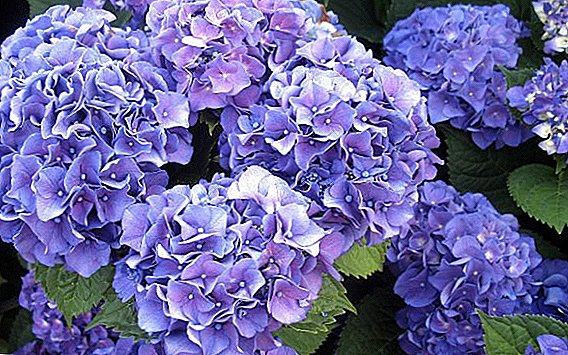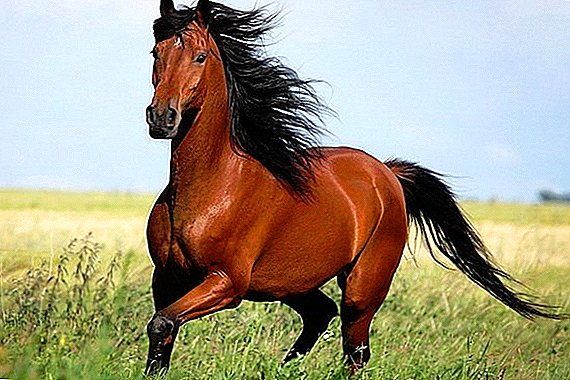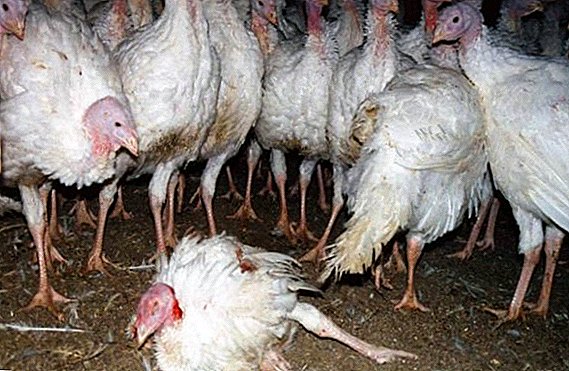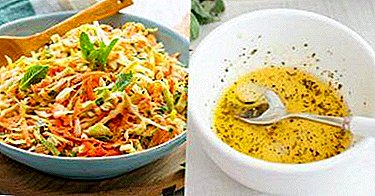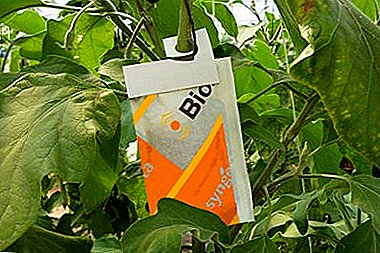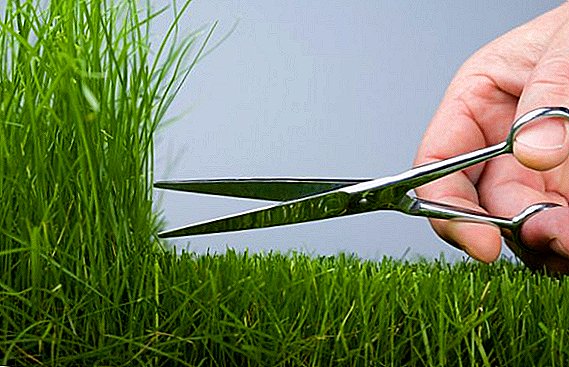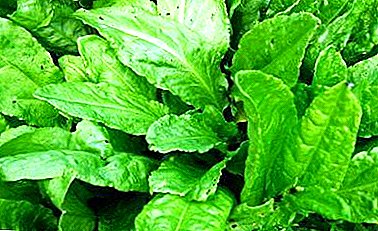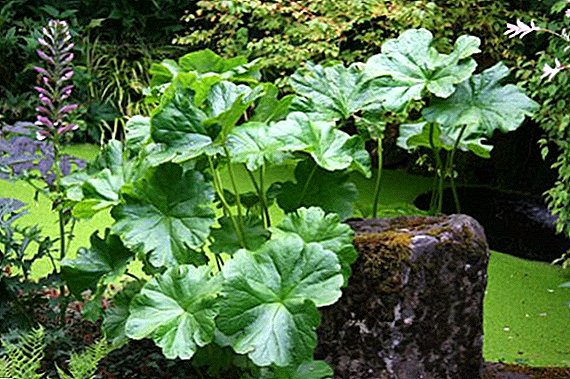 Astilboides lamellar - one of the excellent representatives of the flora, an example of an amazing variety and uniqueness of forms, which nature tirelessly pleases and amazes us. In this article we will tell you how to care for him, how to grow and multiply it in your own area, and how this plant is used in landscape design.
Astilboides lamellar - one of the excellent representatives of the flora, an example of an amazing variety and uniqueness of forms, which nature tirelessly pleases and amazes us. In this article we will tell you how to care for him, how to grow and multiply it in your own area, and how this plant is used in landscape design.
Botanical description
From the very moment of its discovery, the astilboids lamellar was counted among the genus of stone-sawed stones, which was called Rodgers. But over time, this interesting representative of the flora was isolated from the total mass in a separate eponymous genus Astilboides, where it remains to this day, being in it the only species.
Astilboides is a rather large, raslapisty plant, usually rooted between stones, on the slopes and at the foot of the mountains, as well as in dark corners along the edges of forest belts.
Its appearance, in comparison with other ornamental plants, is inconspicuous due to the uniform green color, but at the same time, original and interesting in that the size of its leaves can hit anyone. 
Did you know? Diameter The leaves in adult plants of astilboides lamellar reach 1-1.5 meters, and the height of the stems is only 120-130 cm, which makes this representative of the flora interesting and often used in landscape design.
Despite the large size, the leaves of astilboides are very elastic and rigid, their veins and thin-looking petioles perfectly support their shape even in the hot season. The leaves have a beautiful torn needle fringe around the edges.
In July, long stalks (up to 170 cm tall), crowned with bulky buds of pale yellow, beige and white flowers, slightly similar in shape to bells or lilies, rise above this green giant. Flowering continues throughout July and part of August (25-35 days).
The root system is quite powerful, thick and occupies the same upper area in the surface layers of the soil, spreading creeping processes far away. 
Distribution and habitat
In the wild, this plant is rare. Its main habitat is the marginal territories of Southern China and Korea, where this razlapisty representative of the flora feels great in shady places near the foot of the mountains or in the shadow of the mighty forests.
It is wet and shady places that are the most preferable for astilboidesov, because they like humidity and coolness. But the hot sun and direct rays can be disastrous for them.
Use in landscape design
This representative of flora has received wide use in decorating and landscape design due to its volume, beautiful rich color of greenery and unpretentiousness in care. For example, astilboidesami can decorate a decorative artificial pond in the yard, having landed several bushes along the edge.
To decorate the garden plot, we advise you to read about how to make a mixborder, a rose garden, rock arias, a dry stream, a fountain, gabions, a waterfall, paths from saw cuts of wood and concrete, as well as a flower garden of wheel tires and stones.
 Another option for use can be an artificial alpine slide, where among the stones this shrub will feel excellent. Along the bank of a river or lake, such plants will also look great, replacing reeds.
Another option for use can be an artificial alpine slide, where among the stones this shrub will feel excellent. Along the bank of a river or lake, such plants will also look great, replacing reeds.
Spreading crowns of astilboides will look great in company with other members of their own species. 4-6 bushes are planted in a circle, and another one is placed in the center.
We advise you to read about how to make an alpine slide with your own hands, as well as how to choose plants for an alpine slide.
In a couple of years, in the middle of your lawn, a huge bunch of several astilboids will appear that will please the eye with an abundance of greenery, and by the end of summer will throw out long pedicels, topped with whitish buds.
Another option of planting for decorative purposes can be landscaping the fence, when the bushes are planted along its entire length. In a couple of years, the shoots of lamellar astilboides will close your fence with lush green leaves. You can think of a great many variations, where and how to plant such shrubs, surrendering to the imagination and giving free rein to your imagination. 
Did you know? There is a known case when the bushes of astilboides lamellar were used to decorate the roof of a building. To do this, placed on the roof shallow wooden boxes with soil, which previously had drip irrigation. Thanks to the creeping surface rhizome, this plant felt great in shallow boxes of earth. Lush thickets of bushes created a real green carpet on the roof of the house, turning it into something fabulous and incredible.
Growing at home
Buy astilboides plate can be almost any major store specializing in seedlings of various plants. It can be grown at home, but for this you need to follow certain rules, which we will discuss later.
Conditions of detention
Growing such a giant yourself is a rather difficult task. But if you set out to sprout the seedlings of this shrub, and then plant it in the open ground in the country, it is quite feasible.  For growing at home you will need to prepare a fairly large capacity containers. It is important that these pallets are wide, but not very deep, as the root system grows apart.
For growing at home you will need to prepare a fairly large capacity containers. It is important that these pallets are wide, but not very deep, as the root system grows apart.
It is better to keep such capacity on the window where there is the least light - the best is northern, or, in extreme cases, western, where the sun shines only in the evening. Further place for planting in accordance with the requirements of this plant to the shade and humidity.
Important! It is better to protect astilboids from direct sunlight by timely lowering the blinds in hot noon days. In general, it was repeatedly noted that this plant feels good in the open area under the bright sun. the main thing - so that the soil under its leaves is always wet and does not dry out. So do not be afraid if your astilbides falls under the sun.

Soil and fertilizer
When planting on open soil, it is necessary to follow the conditions of the wild nature, placing this shrub in shady or weakly pritenenny areas on fertile black soil or on nutrient loams. The acidity of the soil should not be too high.
It will be useful for you to read about what types of soil exist, how to increase its fertility, how to independently determine the acidity of the soil, as well as how to deoxidize the soil.
Also do not forget that astilboides needs additional feeding.
- Before planting, its rhizome should be soaked in a special nutrient solution for 20-30 minutes (such solutions are sold in specialized stores).
- In the spring, the plant must be maintained with nitrogen fertilizers, which will accelerate its growth.
- In the autumn, before the onset of cold weather, phosphate and potassium fertilizers should be used to help your pet safely transfer even the most frosty winter.

Watering and moisture
Watering and maintaining a high level of soil moisture should be treated very carefully, especially if astilboides are in direct sunlight.
Important! Do not allow the soil to dry out under this shrub. Otherwise, its surface rhizome will nowhere to take water and nutrients, and this will mean the death of the plant.
If your site and financial resources allow, it is advisable to equip for this representative of the flora drip irrigation, leading one tube to each of the bushes, and preferably several tubes, since the area of the rhizome is quite large. Thus, even if you leave the cottage, your pet will receive enough moisture for a successful life.
You will probably be interested in reading about how to make drip irrigation from plastic bottles with your own hands, as well as how to organize automatic drip irrigation.
Well, if it is problematic to create such irrigation, it will be enough to pour 1-2 buckets of water under each bush in the evenings; on particularly hot days you can double this portion.  It is in the evenings, because at this time the sun is already losing its intensity, drooping towards the sunset, so that in the evening, night and morning your pet will get everything you need until the next watering time comes. The volume of water depends on the age and size of the bush. Accordingly, the larger the bush, the more water is needed.
It is in the evenings, because at this time the sun is already losing its intensity, drooping towards the sunset, so that in the evening, night and morning your pet will get everything you need until the next watering time comes. The volume of water depends on the age and size of the bush. Accordingly, the larger the bush, the more water is needed.
Breeding
Such a giant can multiply in two ways: by seed and vegetatively. Next we look at both of these methods.
Seeds
The seeds of astilboides grow in special boxes, which ripen after the flowers die. From these same seed pods, you will be able to collect the grains in the late to mid autumn, when the pods begin to open.
However, it must be borne in mind that for the successful germination of seeds, additional stratification will have to be carried out. To do this, at the end of autumn it is necessary to sow the seeds in a box, and then prikopat it in the garden before the onset of spring.  Another way of stratification will be a month of aging in the refrigerator, after which the seeds are sown in a room or in a greenhouse on the surface of wet soil and await the appearance of sprouts. In the spring they are planted in open ground with a clod of earth.
Another way of stratification will be a month of aging in the refrigerator, after which the seeds are sown in a room or in a greenhouse on the surface of wet soil and await the appearance of sprouts. In the spring they are planted in open ground with a clod of earth.
Vegetative
Vegetation or division of rhizomes will be another breeding option. This can be successfully done both in the autumn period and in early spring.
- In the latter case, having received a process of a rhizome with a kidney, it must be placed in the soil generously fertilized with leaf humus, deepening by approximately 2.5 cm. In the period of summer heat, the process must be watered abundantly.
- If you spend the growing season in the autumn, the new seedlings are better placed in flower pots and allow them to spend the winter in your home, so that severe frosts do not destroy the young plant. In the spring, the grown seedlings are returned to the open ground for further growth and development.

There are cases when in the very first year of their life a shrub throws out a pedicel and decides to bloom. This should definitely be stopped to allow the rhizome to harden, because the flower will draw off all the vital forces of the plant.
Relation to temperature
Astilboides is loyal to temperature extremes and peak moments like the July heat and January frosts. Heat and cold do not pose a great threat and are not capable of causing serious harm to this plant. But this is only possible if all the necessary measures were taken to fully ensure the vital activity of the shrub.
- From spring to autumn, he needs watering and fertilizing.
- In the summer, when some leaves and stems can die from the heat, they need to be cut and removed so as not to delay the forces at the rhizome.
- Before entering the winter, a thorough examination of the rhizome and stems should be carried out for damage by various diseases and pests. If any have been found, it should be stripped immediately.

Important! In order to prevent damage to rhizomes during severe frosts in the winter, annual mulching of astilboides plantings with falling foliage or other organic materials to a height of 3–4 cm is recommended. It will be good to add soil to the roots, since these The plant rhizome has a peculiarity of growing up, which can be on the surface and suffer from frost.
Possible difficulties in growing
Due to differences in the conditions of Southern China, Vietnam and our lands, astilboides may develop somewhat more slowly. This is due to the lack of moisture, soil mismatch, differences in temperature and light conditions, and other factors that can affect the growth and development of this shrub.
All you can do is properly care for the plant and regularly maintain it with nitrogen, phosphate and potassium fertilizers. You can also use organic fertilizers such as dung, dung, chicken manure, etc., but in very metered quantities, so as not to burn thin stems of high acidity.  Generous watering, regular fertilizers and control over possible ailments will be your main assistants in ensuring the active and full development of astilboides in your garden.
Generous watering, regular fertilizers and control over possible ailments will be your main assistants in ensuring the active and full development of astilboides in your garden.
Pests, diseases and prevention
One of the advantages of astilboides is that it is practically not susceptible to diseases. In the first years of his life, he needs to help fight weeds by regularly weeding the site and raising the ground around the rhizome.
When the shrub becomes older (3-4 years), he himself will easily be able to drown out all the weeds and plants around him within a radius of 1.5 meters. Therefore, it is not recommended to plant other flowers or shrubs near it. The only possible proximity are the same astilboides.
The main pests of this plant are slugs and snails, which attack wide leaves and are able to leave only the veins of the once lush plates. Therefore, if you notice snails or slugs, try to get rid of them immediately. 
Here are some of the most effective defensive measures against attacks of slugs and snails:
- Trap with beer. Scoop up a small container of fresh beer from the evening - so that the rim of the container is flush with the soil and does not create barriers. Slugs themselves will come to the bait, after which they will find their doom at the bottom of the trap.
- Spice. Allspice, rosemary, cilantro and even dry parsley scare away slugs. Fragrant substances should be scattered on the surface of the leaves and around on the ground (the way with the ashes works in the same way).
- Poisons At the moment, there are many poisons against slugs; among them there are even complex ones acting on various pests. It is best to choose well-known, proven drugs: "Ferramol", "Thunderstorm", "Meta", "Bros Snakol", "Shneken Linsen (Etisso)", "Slyneed".
We recommend to read about how to deal with slugs in the garden.
Green, razlapistye, gigantic bushes of astilboides will decorate any site, bringing in it originality and new colors, comparable to the beauty of the southern jungle.  The moisture-loving plant prefers penumbra, but at the same time it is not afraid of temperature drops, various diseases, and also easily reproduces. It will not require too much attention from you and will be a great addition to the other plantings in your garden.
The moisture-loving plant prefers penumbra, but at the same time it is not afraid of temperature drops, various diseases, and also easily reproduces. It will not require too much attention from you and will be a great addition to the other plantings in your garden.



